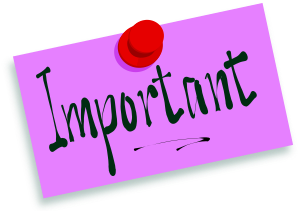
Looking for sources? Search EBSCO or QuickSearch.
Open Educational Resources Playbook
Need Help?
Betty Sue Jessup Library
501 College Drive
Charlottesville, VA 22902
434.961.5309
reference@pvcc.edu
A Note about Attribution
 Of the seven different types of Creative Commons, six require that you provide attribution; two require that if you modify the item that you license it in the same way. So what does this mean, and why is it important? It means that you have responsibilities as a user to tell people who created the original item, where you got it from and how it was licensed. In academia, we are very used to this concept: it's called citing. But attribution is different in that additional information about the license is included.
Of the seven different types of Creative Commons, six require that you provide attribution; two require that if you modify the item that you license it in the same way. So what does this mean, and why is it important? It means that you have responsibilities as a user to tell people who created the original item, where you got it from and how it was licensed. In academia, we are very used to this concept: it's called citing. But attribution is different in that additional information about the license is included.
The Creative Commons provides information on how to properly provide attribution, as does Lumen Learning. If you are going to use an OER in your course, please be sure to follow these guidelines. A rule of thumb to remember is that a proper attribution should include the title of the work, the author, the source and the license (TASL).
Sample Attribution Statements
Original Content
The original content attribution statement takes the form “Original content contributed by PERSON(s) of INSTITUTION(s) to PROJECT.” Example:
- Original content contributed by Mr. Putey of the Anglo-French Silly Walk Initiative to the Ministry of Silly Walks National Archive.
Creative Commons (CC) Licensed Content
The CC licensed content attribution statement includes the title of the work, the author or publishing body, a link to the original location of the material, and the license information. Be sure to include a link back to the Creative Commons Web site that explains the license type. Example:
- Copyright and Fair Use graphic by UAF eLearning is licensed under an Attribution-NonCommercial-ShareAlike 3.0 Unported (CC BY-NC-SA 3.0) license.
Modified CC Licensed Content
The CC licensed content statement takes the form “Content created by PERSON(s) of INSTITUTION(s) for PROJECT, originally published at URL under a LICENSE license.” Specify that this is a derivative and how your derivative is licensed. Include your name. Example:
- This work, "90fied", is a derivative of "Creative Commons 10th Birthday Celebration San Francisco" by tvol, used under CC BY. "90fied" is licensed under CC BY by [Your name here].
Copyrighted Video Content
Always include a DESCRIPTION like “Video of waterfalls.” Always include a statement identifying the content as copyrighted and not openly licensed. Always include the Terms of Use that permit embedding of the copyrighted video. The Copyrighted Video Content statement takes the form “The video of DESCRIPTION was created by PERSON(s) of INSTITUTION(s) for PROJECT and published at URL. This video is copyrighted and is not licensed under an open license. Embedded as permitted by TERMS.” Example:
- The video documentary of the Kennedy assassination was created by Dave Lister and published at http://youtube.com/linktovideo. This video is copyrighted and is not licensed under an open license. Embedded as permitted by YouTube’s Terms of Use.
Public Domain Content
Public domain content should be attributed similarly to other content for consistency. Example :
- Federal Reserve Economic Data (FRED) by Federal Reserve Bank of St. Louis is licensed under a CC0 1.0 Public Domain Dedication.
CC Licensed Content with Specific Attribution Requirements
When CC licensed content includes specific instructions about how to attribute it, include the title, author, source and license as well as any specific instructions provided by the Licensor.
Comprehensive Attribution Statement (CAS)
This page is licensed under a Creative Commons Attribution License and contains content from a variety of sources published under a variety of open licenses, including:
- Original content contributed by Mr. Putey of the Anglo-French Silly Walk Initiative.
- Content created by Edmund Blackadder for the History of English Dictionaries project, originally published at http://someurl456.org/ under a CC BY license.
- The video documentary of the Kennedy assassination was created by Dave Lister and published at http://youtube.com/linktovideo. This video is copyrighted and is not licensed under an open license. Embedded as permitted by YouTube’s Terms of Use.
- Content created by Henry Wensleydale.
- Original content created by Lumen Learning.
Terms of use: This work, "Sample Attribution Statements" is a derivative of content created by Lumen Learning, originally published at http://lumenlearning.com/attribution-architecture/, under a Creative Commons Attribution 4.0 License, and Creative Commons, originally published at http://wiki.creativecommons.org/Best_practices_for_attribution, under Creative Commons Attribution 4.0 License. "Sample Attribution Statements" by the Betty Sue Jessup Library at Piedmont Virginia Community College is licensed under Creative Commons Attribution 4.0 License.